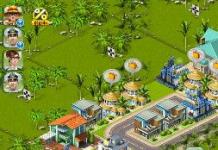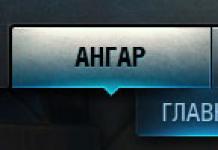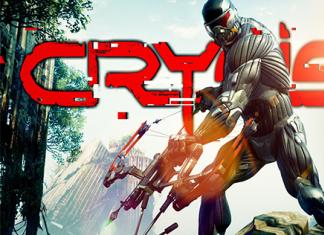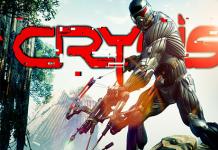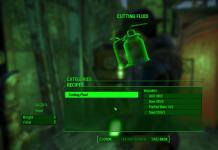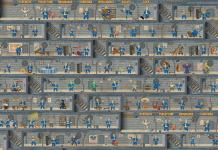Having seen many films, games and books with the participation of aliens, we are already accustomed to the fact that humanity in them most often acts as a victim - at first it endures beatings for a long time, so that in the end it finally gathers its strength and annoys the extraterrestrial aggressors. Gray Goo is tearing the established trend to shreds. Here, in the very first video, we see a human invasion of Ecosystem 09 - a picturesque world favored by the slightly apathetic Beta race of humanoids - which in itself is unusual and fresh. True, a few missions later the differences will be settled, and former opponents will have to join forces in the face of a new threat - the titular Gray Slime, or, using localization terminology, simply Gu.
For those who did not closely follow the game before release, such an idea may seem funny and even somewhat absurd: “Slime? Seriously? Pfft, we played World of Goo, we know.” But jokes aside, gentlemen, in reality everything is serious. In fact, Gray Goo is based on a loose interpretation of the hypothetical doomsday scenario of the same name. According to this scenario, the development of molecular nanotechnology can lead to the emergence of uncontrollably self-replicating nanomachines that will absorb all the matter of the Earth, and subsequently the entire material Universe. And although the concept was considered unlikely due to a number of limitations, it has become widespread in science fiction in one form or another. If this topic seems interesting to someone, we recommend reading the relevant material on Wikipedia or specialized literature (for example, “Machines of Creation” by Eric Drexler), but in the meantime, we will return to the game. According to local history, the original Slime were von Neumann probes created by humanity to explore deep space. When the need for this disappeared, the creators simply abandoned their creations to the mercy of fate. But they, following the programs embedded in them, headed back to Earth, devastating all the worlds they encountered in their endless cycle of reproduction. Next on their path is Ecosystem 09...
Thus, we have a classic trio of warring parties - the conventionally “strong” Beta, the conventionally “smart” people and the unconditionally all-consuming Gu. In conversations, from time to time they mention some other terrible “Silent Ones”, whom the Betas fear like fire, but in the end things never go beyond words. Perhaps the developers have reserved a place for them in the sequel, which is strongly hinted at by the campaign, which was cut off literally mid-sentence.
Saruk - the newly minted hero Beta
Humanoid races in general are very similar to each other, and the main differences between them lie in what principles they follow when arranging their bridgeheads. Beta are more universal in this regard: they build their bases on the basis of central stations, to which additional modules are attached - mining plants, factories, repair sites, and so on. The larger the station (there are three dimensions in total), the more modules can be attached to it. Beta are not bound by any territorial restrictions, and therefore can plant their checkpoints on the surface at any visible point on the map. This allows them to both conduct aggressive expansion, occupying more and more new frontiers, and sit out at the base, driving away the enemy with fire from the soldiers stationed on the walls.
Humans in Gray Goo are presented as a technologically more advanced race, but, as is often the case, any technology has its downsides. In this case, this is expressed in the fact that all human buildings must be included in the energy network of conductors laid on the ground, powered from the central core. This circumstance makes the only acceptable game from defense. But it is in defense that people are damn good. Instead of solid walls, they surround the base with energy barriers, through which earthling troops can freely pass and shoot, and their occupied weapon points are replaced by full-fledged turrets of several types. After conducting the appropriate research, the anti-gravity tanks will begin to repair themselves, the guides will mine the surrounding area, and the guns will not stop firing, even when cut off from the network. With the proper approach, the human base can withstand even a very powerful onslaught, and the earthlings compensate for the lack of mobility with the ability to teleport troops to the front line. True, only six units every few minutes is good for intercepting enemy saboteurs, but in a serious battle this is unlikely to help.

Therapeutic cauterization is a surefire remedy for various nanoslugs
Mucus is a completely different matter. Nanomachines do not have a stationary base as such. The basis for them is Mother Gu - a huge shapeless clot that literally devours resources from deposits and grows further at their expense. Having reached a certain size, the Mother can either bud off a smaller clot—the Progenoid—or even give birth to a second Mother. Progenoids, in turn, are “deployed” directly into combat units. Gu troops are relatively fragile, but they fully compensate for this with their speed of reproduction, high lethality and, of course, incredible mobility. Many Gu units are able to easily climb mountains and cross ravines that are insurmountable for other races. This makes the war against the Slime a real headache. Chasing all over the map after the elusive Mothers, who easily escape from fire, giving birth to new fighting cuttlefish as they go, is sometimes very difficult. Very for a long time.
And although, due to its peculiarities, playing for nanomachines requires O Having more microcontrol skills than other races, in general Gray Goo tends to have a measured pace. Proper development of the base and establishment of uninterrupted production here is the only true key to victory. To facilitate the construction process, the developers have added a hotkey system to the game. Just like in good old Counter-Strike, where your fingers automatically tapped “B-1-4” to buy a Desert Eagle, in Gray Goo you can order the construction of buildings and troops by simply pressing a certain sequence of buttons, without being distracted by the panel at the bottom of the screen. In terms of strategy, this seems a little unusual, but once you get used to it, the process will go much faster. "Q-Q-R" is a medium station, "Q-W-W" is a large factory, "Q-E-Q" is a tank extension, "E-Q" is for producing units - voila, a new stronghold is ready. Simple and convenient.

People are heroically defending themselves. This time, however, they won’t hold back
Gray Goo is a game purely about power-butting. The winner here is the one who managed to hold out longer than others, and then gathered a powerful steel fist and methodically trampled the enemy into the ground. Fans of the million-click-per-second esports StarCraft will likely be disappointed by Petroglyph's creation. There is no room for tactical genius to show itself here, the small number of available types of troops negates the need to think through the completeness of strike groups, and the maps are not conducive to maneuvers. Gray Goo is extremely rude and straightforward, but it is precisely in its straightforwardness that it is beautiful. The developers can be called conservatives and old believers, but in this case it will sound purely as a compliment. Having created Command & Conquer, Dune and in many ways laid the foundations of the strategic genre itself, they still follow their line, not looking at fashion and trends. Low bow to them for this.
Advantages:
- gameplay with an emphasis on development rather than micromanagement;
- exciting campaign;
- Pleasant to the eye graphics and excellent videos.
Goo will survive... Goo will expand... Goo will face increasing silence
Send
It is worth admitting that from the moment of its announcement the author of these lines was skeptical about the game. From the very first day, studio representatives Petroglyph enthusiastically talked about how their creation would breathe new life into the real-time strategy genre, and in general, become an analogue of the Savior from the world of computer games. And the formal grounds for this were none other than the people who once created and (the backbone of the studio are veterans of the gaming industry) are destined to rewrite its rules anew. But here’s the problem: everything they showed and told looked more like an attempt to “mix up” theirs with the Gray Slime instead of the Zergs. Looking ahead, let's say that most of the fears were not justified, but Petroglyph we really managed to create a self-sufficient product that brings several new ideas to the genre.







The first thing that pleasantly surprises immediately after launch is the visual performance. And all its aspects. The videos are beautiful (they, of course, do not reach the scale, but they look very decent), briefings before tasks are given by cute faces, and what is especially gratifying is that the “beautifulness” does not disappear anywhere after loading the game map. The game succeeds not due to its technology or beautiful art separately, but due to their competent combination. Good design of units, buildings and environments is supported by clever use of visual effects, high-quality models and clear textures. And how animated it all is! The author of these lines had to restart the mission several times due to the fact that he was carried away by contemplating the construction process of the next plant or the holograms flickering above the Human headquarters. Babble, and that’s all.




The story campaign in the game is the same for all three factions, so getting to know them proceeds strictly according to the developers’ plan. And this introduction is very exciting: if you first started to go through the single-player campaign, leaving multiplayer and battles with AI for later (and this is exactly what we recommend doing), then you are guaranteed several “wow” moments. When you start playing as a Beta (flat-faced multi-armed creatures scurrying away from Silence), you have absolutely no idea what’s going on with representatives of other races. Human units and their base operate according to some completely different principles from those inherent in the faction under your control. And Goo doesn’t have a base at all, but this jelly happily devours your troops and buildings. And an understanding of what is really happening will not appear until you have time to play for each faction.




Radically different factions are the cornerstone of the entire gameplay concept of Gray Goo. Humans, Goos and Betas don't just have different sets of units with their own strengths and weaknesses - they have different philosophies of combat. Beta can build outposts and erect walls with towers for units. People are deprived of the opportunity to constantly expand their possessions, but they defend well what they have with automatic turrets and can teleport troops to any point on the map. Goo does not have a base, but Mother Gu has units that absorb resources, produce troops and their own kind. Humans and Betas have aircraft that Goo does not. But the latter have units capable of moving through the mountains... This list can be continued for a very long time.


Simply put, the classic RTS concept of “rock-paper-scissors” is squared, and maybe even cubed. And the most surprising thing here is that the developers managed to balance the factions at the time of release so that there are no clear favorites and outsiders. When participating in multiplayer battles, the player can safely choose the faction that he likes, and the outcome of the battle will depend on his skill, and not on the fact that “Goo is bent.” We won’t speculate about the e-sports future of the project (this area is very conservative), but the multiplayer potential is very good.
Unfortunately, there are a couple of shortcomings that spoil the overall impression. Firstly, this is the development of tasks and maps in the single-player campaign. If in the same way each mission is unique, poses new tasks for the player and at the very least echoes the plot that is presented between battles, then in Gray Goo everything is much more prosaic. All the creators of the game had enough imagination for was missions like “defend-attack” and “capture-destroy.” And everything would be fine if it took place on interesting maps. But no: half of the locations here actually feel like they’re concocted on the basis of symmetrical multiplayer maps, and the rest are kind of sadly predictable. Moreover, there are as many as one and a half climatic zones in which the game takes place. No scorched deserts or arctic snows for you - only forests and swamps with forests.
Ugly stupid units. If in all other strategies the first position in terms of inappropriate behavior is traditionally occupied by harvesters, here they are practically absent as independent units and do not cause any trouble. But all combat units are completely devoid of common sense and on their own can only die resignedly under enemy fire. For example, an armored Goo unit, which has no weapons and is designed to divert enemy fire, will NEVER come forward to take this same fire. He will stand on the sidelines while those he is called to protect take damage and die in batches. So you have to constantly drive all the troops manually, until a slightly more sane enemy AI kills half of your charges with one stunted artillery mount. The problem, of course, is not new for the genre, but in 2015 one could at least try to solve it.
But, despite the previous couple of paragraphs, filled with resentment and indignation, it is worth recognizing that Petroglyph it really worked out

Shake up the genre and breathe some fresh ideas into it. This can hardly be called a real revolution, but Gray Goo is quite worthy of the status of the founder of a new successful series that will give impetus to the next round of RTS evolution.
One of the most beautiful RTS in the history of the genre. It's a shame that in other respects it is secondary to the core and any player who ate the dog at one time Command & Conquer or Starcraft, will very quickly lose interest in the new creation Petroglyph Games(a team, by the way, that created a wonderful in all respects Star Wars: Empire at War).
Begins Gray Goo promising. The authors did a great job on the visual part, which has an extremely positive effect on first impressions. Stylish menus, stunningly beautiful loading screens, characters worked out to the smallest detail... Everything is done at the highest level. The same applies to cinematic videos that introduce us to the universe. By the way, about her: action Gray Goo takes place on a distant planet called the Ninth Ecosystem, where at some point things become crowded, and conflict breaks out between the factions inhabiting it. There are only three sides: people, the Beta race and the mysterious microrobots The Goo. Each of them traditionally has its own army and a set of unique technologies, which turn out to be far from being as diverse as it seems at first. It gets ridiculous: the structures of people and Beta differ only in appearance, performing, in fact, the same functions. New units are unlocked gradually, over fifteen missions - five for each faction.
It is noticeable that the authors tried to somewhat diversify routine missions with various small additional tasks. However, this doesn’t make much sense. Any battle in Gray Goo It follows one scenario: we collect resources, develop, and wipe out the enemy from the face of the earth. No surprises. It is enough to follow one simple scheme, and victory will come to you. Despite this, in Gray Goo There are also plenty of positive aspects. Take, for example, the already mentioned interface. The game is very easy to learn and, unlike its peers in the genre, does not require you to spend several hours mastering the basic rules. An interesting idea is also the use of the planet's flora in skirmishes with the enemy. The dense forests of Ecosystem Nine, for example, can easily shelter your fighters in their embrace, allowing you to deliver an unexpected blow to the enemy.
***
It should be noted that Gray Goo primarily focused on multiplayer, because the campaign here is too short and faceless to justify the considerable cost of the game. Fans of fierce online hacks, unfortunately, will also be disappointed; in a world where it already exists Starcraft, in order to play in the online strategy field, you need more than just a pretty picture. Alas, nothing else Gray Goo oppose the giant from Blizzard it simply can't.
As an inspiring savior of the genre in computer games. But the main problem of the game is that all attempts to create and show something new were more like “their” Starcraft, where instead of Zerg slime they were going to make gray slime. Going a little ahead, let's say that all the concerns about it were false, so the studio actually made a game that introduced several new ideas into this genre.
The first thing that catches your eye when you launch the game is its visual design. At the same time, all aspects of the game are completely different. The game videos are incredibly beautiful, even if they are not on the scale of Starcraft, and before each task there is a small interesting briefing along with some cute alien face. And what’s more, after starting the game and entering the map, this beauty is not lost at all! Here, a competent combination of beautiful art and technology has merged very succinctly. Therefore, this beauty resulted in both the design of units and the design of the surrounding world. Added to all this are visual effects that also look high quality. We don’t forget about the textures, which look very clear, and together with the made models, everything is completely irresistible. I just want to restart the task every time to enjoy the contemplation of the construction process, because the animation is simply at its best.

The storyline is quite standard for a representative of the strategy genre: three large factions began to fight among themselves for survival and for control of the planet. Naturally, there are some cool plot twists here. The story that will be told to you in the game is certainly not original, but it is written at such a level that it will not disgust you. The most interesting and important thing is that during the storyline, players are introduced to each of the three existing factions.
The storyline “spreads” completely across all three factions, so it is one. You will move strictly according to plan and gradually learn the details of each of the three factions. The learning process will be quite exciting. If you started playing a single-player company (which we immediately advise you to do), then you will undoubtedly encounter some “wow” moments. Once you start playing as Beta, you won't really understand what's going on with the other factions. The buildings and units of people work according to some new principles, but Goo does not have its own base at all, so they are some kind of slugs that will happily devour all your troops.


The most interesting thing about the game is that each faction has its own unique gameplay concept. Beta, Humans and Goo not only have different types of units, with their own strengths and weaknesses - they have different methods of combat from each other. Beta have the ability to build outposts, and on them towers with units. People cannot widely expand their possessions, but they are very good in defense thanks to turrets and teleportation. But for Goo, everything is completely different: they do not have a base, but they have Mother Gu - a unit that absorbs not only resources, but also creates troops. Another example: Beta, together with Humans, have aviation, which Goo does not have, but for that Goo have units that are able to move through the mountains. A list like this could go on for a long time.
In general, the standard RTS concept in the game is now presented as a square, and maybe even a cube. But even here there is no minus, because the developers still managed to balance all three factions among themselves, so you will not see any obvious outsiders or favorites. In a multiplayer battle, the player has the right to choose any faction and victory will depend only on his skill. Yes, of course, you shouldn’t build an e-sports future for the game, but it has quite a lot of potential.


But still, it has some shortcomings that somewhat spoil the entire impression of the game. To begin with, it is worth noting the development of buildings and maps in the company. If each task was unique, then everything is too old or something. In general, all the creators of the game had enough imagination for was “attack and defend”, “destroy and capture”. And this would be a minor problem if all the actions took place on some unique maps! There are no deserts, snow-covered arctic meadows, forests, swamps - nothing in general.
Another problem is that Goo units are incredibly stupid. They are so independent here that they can only simply die under enemy fire. For example, Goo's armored unit, which must take all the fire upon itself, will never voluntarily come forward to take all the enemy's fire upon itself. He will always stand on the sidelines while those he is supposed to protect die like flies. This is precisely why you have to constantly drive all units to key points and do all the work assigned to them for them.
Results
Despite all the disadvantages of the game, it is worth recognizing that the studio
Developer: Petroglyph Games
Publisher: Gray Box
Genre: Strategy
Multiplayer: There is
System requirements (minimum): Windows Vista/7/8; Intel Core 2 Duo E6600 2.4 GHz/AMD Athlon 64 X2 Dual Core 5000+ 2.6 GHz; 4 Gb RAM; NVIDIA GeForce GTX 460/AMD Radeon HD 5870
In most films about extraterrestrial beings, humanity plays the role of test subjects or victims. Often, aliens are aggressors who are trying to take over the planet or experimenters conducting various studies on earthly creatures. Usually humanity gathers its strength and always gives a worthy rebuff to invaders from other civilizations.
Gray Goo– this is something new and not redundant. Even in the first video you can see a completely opposite, unusual picture. Humans are unceremoniously invading Ecosystem 09, this picturesque place is home to the Beta race of humanoids. They impose their own rules here, of course, humanoids are against such an impudent invasion. But not everything is as sad as it might seem at first glance. After a couple of missions, people and humanoids will have to unite, as a new threat is approaching, namely the titular Gray Slime, or as it is also called Gu.


Plot
The plot of the game is based on a free interpretation of the end of the world scenario of the same name. According to this scenario, molecular nanotechnologies, which have begun to actively develop, provoke the emergence of uncontrollable nanomachines capable of self-reproduction. These machines can absorb not only the matter of the Earth, but also the entire material of the Universe. This concept was considered unlikely, as it was accompanied by a number of limitations. Oddly enough, in science fiction it has become widely applicable and gained popularity.
Gameplay
Three opposing sides in the form of: strong Betas, smart people and the all-consuming Gu. There is still talk of the dreaded "Silent Ones" that terrify Beta, but they do not appear in the game. Although the plot of the game seems to have been cut short, so it is possible that “The Silent Ones” will appear as a continuation of this story.
Humanoid races have similarities, the differences between them are the principles that guide them when arranging bridgeheads. Beta are considered the most universal, since their bases are equipped on the basis of central stations, with additional modules attached. They mine mills, factories, repair sites, etc. The number of modules depends on the size of the station; it is worth noting that there are three dimensions in total. Betas do not have any territorial restrictions, which allows them to plant their roadblocks on the surface absolutely anywhere on the map. This tactic helps them wage an aggressive fight for new territories or sit at their base and destroy their opponents without leaving their location. There are fighters on the walls who closely monitor their territories.



IN Gray Goo humans are presented as a more advanced race in terms of technology, although these technologies have both advantages and disadvantages. People's buildings must be connected to an energy network of conductors that run underground, a network tangled from a central core. This circumstance is acceptable for playing defensively. This is where superiority lies, because defense is the strong point of people. There are no defensive walls at the base, but people surround their territory with energy barriers for protection. Earthling troops pass through them and shoot at their enemies; full-fledged turrets replace their gun emplacements. Relevant research contributes to the fact that anti-gravity tanks will be repaired independently, conductors will mine the surrounding area, and even guns cut off from the network will fire. The right approach will help the base of people withstand even the most powerful attacks of opponents. The only downside is the lack of mobility, which people compensate by teleporting troops to the front line. Although six units may be enough to intercept enemy saboteurs, it is unlikely for a serious battle. In general, human troops are prepared and can give a worthy rebuff to their offenders.
Slime is a completely different topic. Nanomachines do not have their own stationary base. The basis for them is a huge clot without a form, devouring various resources, because of this it only increases in its mass. This clot is called Mother Gu, having reached a certain size, Gu can separate from itself a clot of a smaller shape, or give birth to a second Mother of the same type. Smaller clumps are called Progenoids; they can form into combat units. But the Gu troops cannot be called powerful; on the contrary, they are relatively fragile. But they compensate for their shortcomings with enormous playback speed, amazing ability and, of course, their mobility. Most Gu units can climb mountains and ravines, such maneuvers are inaccessible to other races. The war of other races against Slime turns into a protracted and painful battle. You have to chase after these Matters, trying to get into them, and they give birth to new combat cataracts as they go, which only makes the situation worse. Often such battles last for a very long time.







